Single-Tooth Restoration on an Existing Tooth
Exceptional strength and esthetics, precision fit, and biocompatibility—these are the core features of the NobelProcera™ crown. Available in a full range of versatile materials for all locations in the mouth, NobelProcera is the safe and effective choice for the preservation and restoration of natural teeth.
After more than 15 years of clinical research and experience, NobelProcera has proven long-term success and efficacy. These individually designed solutions offer consistently natural-looking esthetics, while the purity and homogeneity of the materials provide exceptional strength, biocompatibility, and stability. NobelProcera’s next-generation, customized solutions for single-tooth restorations enhance clinician efficiency—and patient gratification.
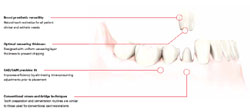 View Figure |
Key Take-Aways
|
Case Study: Existing Tooth – Anterior |
|
|
Single-Tooth Replacement on an Existing Tooth. |
|
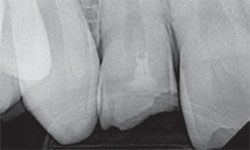 |
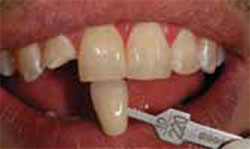 |
| Preoperative radiograph reveals a major fracture to tooth No. 7. An all-ceramic restoration was planned. | Before tooth preparation, a shade tab was used to take a match for a NobelProcera alumina crown. |
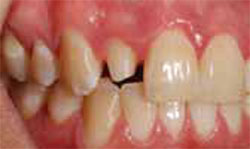 |
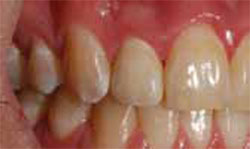 |
| Lateral view of prepared tooth No. 7 at the seating appointment. | Close-up of the final restoration. With four different shades available for the core, shade matching is easier for the technicians. |
|
|
|
Case Study: Existing Tooth – Posterior |
|

Scott MacLean, DDS, FADI, FPFA, FACD
Treatment Using a Porcelain-Fused-to-Titanium Crown |
|
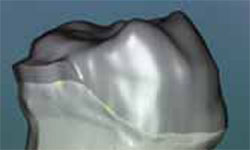 |
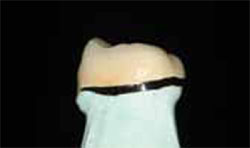 |
| CAD design of the titanium alloy coping, which was then fabricated at a Nobel Biocare central manufacturing plant using titanium aluminum vanadium. | Research has demonstrated marked improvements in marginal fit using the milled fabrication process. This image shows the excellent fit of the titanium on the crown die. |
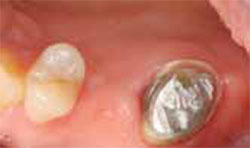 |
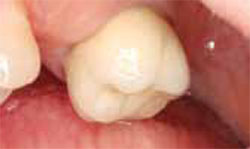 |
| The clinician should ensure adequate removal of the tooth structure to provide porcelain plus the coping thickness of 0.4 mm to 0.5 mm. | Close-up view of the final TiPFM crown, cemented with a self-adhesive resin cement. Titanium alloy is expected to offer strong, long-term esthetic performance. |
|
View the entire case study and learn more about single-tooth restorations at nobelbiocare.dentalaegis.com |
|


 Shahriar Parvizpour, DDS
Shahriar Parvizpour, DDS
